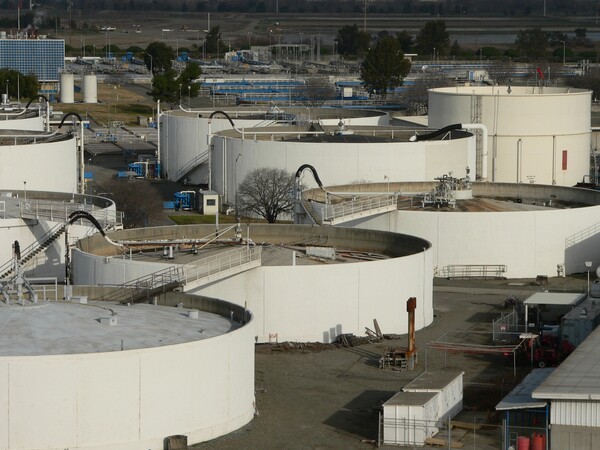Sewage-Powered Electricity Goes Online in San José

San Jose Water Treatment Plant's anaerobic digesters | Photo: city of San José
San José's Water Pollution Control Plant, which treats sewage and wastewater produced by more than a million residents of the South San Francisco Bay Area, will be firing up a new 1.4 megawatt fuel cell generator that will turn methane and other biogas from the plant's digesters into electric power. The plant, built by Anaergia, will help power the water treatment plant on the south shores of San Francisco Bay.
Related

Explained: Biomass and Energy
Fuel cells convert chemical energy from fuels such as methane or other hydrocarbons into electrical energy without burning the fuel. The treatment plant's fuel cell is of the molten carbonate variety, which can reach higher temperatures and operate at significantly greater efficiency than many other designs.Anaergia Services has a power purchase agreement with the City of San José, and the power generated will go towards the operation of the sewage treatment plant.
This is good news for San José's plant operators, who have faced some unnerving news in recent weeks as a wave of resignations among plant operators followed a 10% cut in pay for city employees. The resulting staff shortage prompted worries over whether the plant could be operated safely.
The Water Pollution Control Plant processes all wastewater coming from San José, as well as the nearby cities of Campbell, Los Gatos, Milpitas, Monte Sereno, Saratoga, and Santa Clara.
ReWire is dedicated to covering renewable energy in California. Keep in touch by liking us on Facebook, and help shape our editorial direction by taking this quick survey here.


